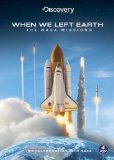| Reviews & Columns |
|
Reviews DVD TV on DVD Blu-ray 4K UHD International DVDs In Theaters Reviews by Studio Video Games Features Collector Series DVDs Easter Egg Database Interviews DVD Talk Radio Feature Articles Columns Anime Talk DVD Savant Horror DVDs The M.O.D. Squad Art House HD Talk Silent DVD
|
DVD Talk Forum |
|
|
| Resources |
|
DVD Price Search Customer Service #'s RCE Info Links |
|
Columns
|
|
|
When We Left Earth: The NASA Missions
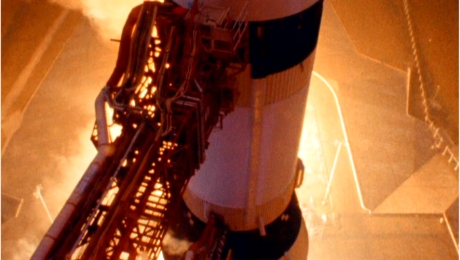
It's obvious that we routinely approach documentaries and other films with a personal bias, thanks to the life experiences accumulated during our younger years. I was not alive when man first walked on the moon, so I never experienced the thrill of watching such a historic event as it happened. Instead, my first real memory of watching a NASA mission was the space shuttle Challenger's launch in 1986, when my second-grade class gathered around the television to watch it live. Though I didn't know it yet, a future science teacher of mine---who I wouldn't meet for another three years---unsuccessfully applied for the seat eventually occupied by Christa McAuliffe. As most are readily aware of, the shuttle never left our planet; instead, it disintegrated less than two minutes after takeoff due to an equipment failure. The disaster was enough to suspend the shuttle program for nearly three years---but luckily for NASA, mistakes of such magnitude have been few and far between.
Childhood memories aside, America's space program has encountered many more successes than failures---and considering how much can potentially go wrong from start to finish, it's downright amazing that NASA has maintained such an exemplary track record since its formation in 1958. The Discovery Channel, in association with NASA, has delved deep into their archives to explore the history of America's space program, from the first hints at orbit to more recent historical milestones. The result is When We Left Earth: The NASA Missions, originally broadcast on Discovery HD earlier this year. Spanning five decades in as many hours, it proves to be anything but a paint-by-numbers documentary laced with dull stock footage. Instead, this formidable collection of vintage photographs and clips---portions of which are new to the public eye---has been paired with new comments by original crew members, NASA employees and the like. Narrated by Gary Sinise (Apollo 13), When We Left Earth is as entertaining as it is educational; in short, it's perfect viewing for sky-watching fans of all ages.
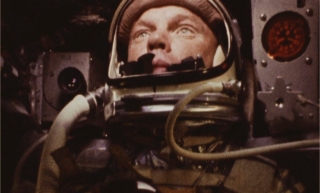
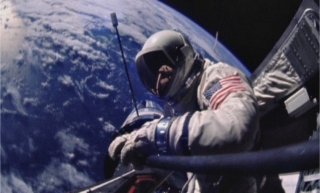
Disc 1 leads off with "Ordinary Heroes", which details the early days of the chest-thumping 'Space Race', NASA's first attempts to launch rockets in low-atmosphere flight and the formation of the Mercury Program, which resulted in such achievements as Alan Shepard's brief but historic flight and John Glenn's orbit in the Friendship 7. Paired with comments by some of the original crew members and NASA technicians, it's an effective opener. This segues nicely into "Friends and Rivals", which focuses mostly on Project Gemini, the first spacewalk made by astronaut Edward White and the space-docking completed by Neil Armstrong. Both episodes do a fantastic job of setting the tone nicely, showing us glimpses of NASA's rigorous training program, the friendly competition between the astronauts---and in some cases, the first hints of "passing the torch" to promising newcomers.
Disc 2 switches gears to focus on the Apollo missions, kicking things off with "Landing the Eagle". Among other milestones, this episode details the historic moon landing of Apollo 11, which is aided greatly by newly-recorded comments from Buzz Aldrin and the reclusive Armstrong. "The Explorers" continues our journey by focusing on Apollo missions #12-17---including Apollo 13, which could've been NASA's greatest failure up until that point, if not for the skill and precision of the astronauts and NASA technicians. Also featured here is the development and launch of the space station Skylab, which was put into orbit in 1973 and circled the Earth for six years. Sustaining heavy damage during the original launch, the one hundred-ton structure was repaired during a spacewalk by astronauts sent up less than two weeks later. The early re-entry of Skylab in July of 1979 was a media sensation in its own right, as displaced pieces of the structure quickly became collector's items.
Disc 3 begins with "The Shuttle", which focuses on the flights of shuttles like Columbia and the doomed Challenger five years later. The first marked NASA's debut of such a vehicle, designed to carry a payload of satellites and repair parts---not to mention a crew of five to seven astronauts, who were housed in a plane-like structure which could land on a runway after re-entry. Challenger's destruction and the controversy that followed it make the second portion of this episode especially interesting, but it's the final episode that ultimately moves beyond the terrible tragedy. "A Home In Space" focuses on the repair of the Hubble Space Telescope (launched in 1990 and touched upon during the fifth episode, in regards to a defective mirror onboard) and the 1998 launch of the International Space Station, which has been continuously populated by astronauts for the past eight years. Though another tragedy is focused on with the destruction of the Columbia in 2003 during its 28th mission, When We Left Earth stresses hope for the future and the continuance of space exploration.
NOTE: Disc 4 includes a collection of NASA short films, which are covered in the "Bonus Features" section.
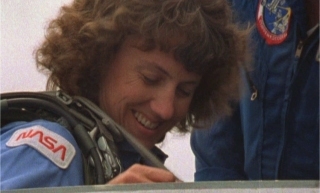
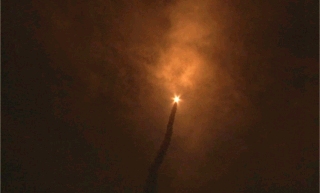
Public interest in the space program may have waned in the decades since man first entered orbit, but When We Left Earth reminds us of NASA's dedication and achievements during the last fifty years. As mentioned earlier, the combination of archived footage, newsreels and photos with newly-recorded interviews proves to be a potent formula, creating a fully-realized experience from start to finish. The narration by Sinise during each 48-minute episode works well within the documentary format; more often than not, he doesn't intrude with constant play-by-play, letting the footage and its featured subjects tell the story instead. From top to bottom, this is top-notch entertainment that fans of all experience levels should thoroughly enjoy.
Presented on DVD by Image Entertainment, When We Left Earth ports over the six-part documentary in both standard and high-definition formats; though each release has already been covered by DVD Talk (linked here), today's review takes another look at the standard-def version. Boasting a strong technical presentation and a solid mix of bonus features, this four-disc set is a worthy effort all around.
Presented in their original 1.78:1 aspect ratios and enhanced for 16x9 displays, these six episodes look very good from start to finish. It's obvious that the footage on display was taken from different sources of varying quality; with that said, the restoration done to the archival material looks fairly impressive. Colors are generally bold and bright, black levels are solid and newly-recorded interviews boast a strong level of image detail. The graininess of older clips has been preserved nicely and is free from excessive noise reduction processing. Only a mild amount of digital combing keeps When We Left Earth from scoring higher, but fans shouldn't be disappointed. This is obviously a series produced with great care, and the DVD follows suit nicely.
Likewise, the audio presentation carries its own weight. Presented in your choice of Dolby Digital 5.1 and 2.0 Surround (though it defaults to the latter, oddly enough), When We Left Earth sounds quite good within the confines of the documentary genre. Shuttle takeoffs and atmospheric effects---not to mention the stirring music score, of course---often fill the rear soundstage, while the majority of the "talking head" interviews are anchored up front with decent channel separation. Optional English (SDH) and Spanish subtitles are included during the six episodes and most of the accompanying bonus features.
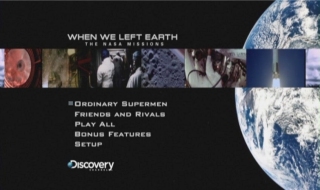
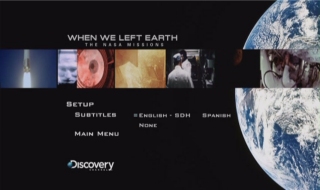
Disc 2 follows suit with a few additional NASA Film Highlights (9:09), as well as Interviews with Apollo 12 pilot Alan Bean (3:09) and NASA flight director Eugene Kranz (4:34); additionally, we get more Mission Clips, including "Apollo 8: Launching & Stage Separation Sequence" (1:58), "Apollo 8: Lunar & Earth Orbit" (1:53), "Apollo 9: Lunar Module In Earth Orbit" (0:59), "Apollo 11: Astronauts Return & Parade" (1:30), "Apollo 16: Lunar Rover Test Drive" (1:47) and "Apollo 17 Night Launch" (1:12).
Disc 3 includes a selection of Skylab Footage during the first 40 days (7:35), Interviews with astronaut Shannon Lucid (2:48) and engineer James Croker (1:32), plus another round of Mission Clips, including a "Skylab Tour" (1:58), "Skylab in Zero Gravity" (1:35), "Shuttle STS-1 Launch" (1:39), "Shuttle STS-1 Landing" (1:26), "Hubble Deployment" (1:15) and "Shuttle STS-61 Hubble Repair" (1:19). These clips and interviews can be hit or miss depending on your interest in the respective missions, but it's great to see these extras on board anyway.
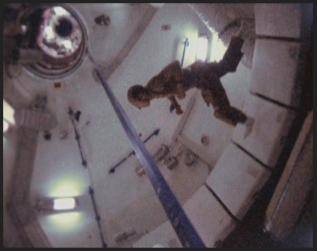
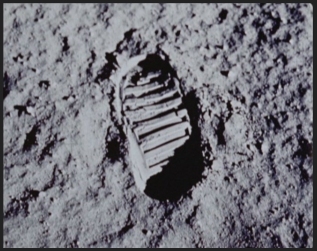
Disc 4 is home to a number of Short Films, including "Freedom 7" (28:22), "Friendship 7: John Glenn" (58:06), "Proud Conquest: Gemini VII and VI" (29:11), "Apollo 8 Debrief" (27:33) and "The Flight of Apollo 11" (28:24). These films are in slightly rough shape but their rarity makes up for it; more often than not, these have never been available to the public until now. A generous amount of zero-gravity footage is also included, not to mention more detailed stretches of the first moon landing (both seen above). Overall, these are certainly worth browsing through and round out the set nicely.
All bonus features are presented in 1.33:1 format and most include optional subtitles in the languages noted above. With such care taken in regards to the overall presentation, When We Left Earth truly feels like a complete experience, instead of...well, what documentary fans usually get thrown their way. Kudos to the production team for their detailed efforts!
Spanning several decades and absolutely loaded with vintage photos and footage, The Discovery Channel's When We Left Earth: The NASA Missions is a no-brainer for those even casually interested in astronomy. Your overall appreciation of this detailed series may depend slightly on your age group, but make no mistake about it: this is a thoughtful and well-produced documentary from start to finish. Luckily, Image's four-disc collection pulls its own weight, combining a solid technical presentation with a host of historically invaluable bonus features...and the attractive and practical packaging job is just icing on the cake. Many fans have undoubtedly made up their minds by now, but When We Left Earth is certainly worth adding to your permanent collection. Highly Recommended.
Randy Miller III is an affable office monkey based in Harrisburg, PA. He also does freelance graphic design projects and works in a local gallery. When he's not doing that, he enjoys slacking off, second-guessing himself and writing things in third person.
|
| Popular Reviews |
| Sponsored Links |
|
|
| Sponsored Links |
|
|
| Release List | Reviews | Shop | Newsletter | Forum | DVD Giveaways | Blu-Ray | Advertise |
|
Copyright 2024 DVDTalk.com All Rights Reserved. Legal Info, Privacy Policy, Terms of Use,
Manage Preferences,
Your Privacy Choices | |||||||









